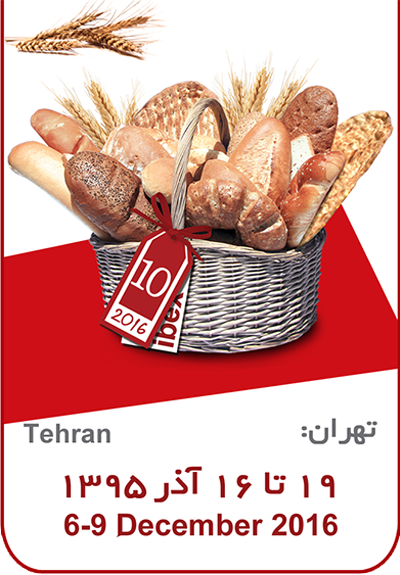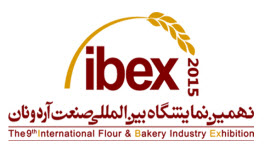

About Tehran:
About Tehran
Geographical Position, Tehran
The province of Tehran covers an area of 18,956 square kilometers and is located to the north of the central plateau of Iran. This province has common borders with the Mazandaran province from north, Qom province from south, Semnan province from east and Qazvin province from west. The metropolis of Tehran is not only the central city of the province, but is also the capital of the Islamic Republic of Iran. According to the latest records, the towns of this province include Tehran, Damavand, Ray, Savoj Bolaq, Shemiranat, Shahriyar, Varamin, Islam Shahr and Karaj.
The population density of Tehran province in October 1996 was approximately 11.176 million of which about 84.15% resided is urban areas and 15.85% is the rural area.
The highest point of the province is Damavand peak at an attitude of 5,678 m. and the lower most vicinity of the province being the plains of Varamin, 790 m. above sea level and located to the south-east of the province.
Mountain ranges such as the Alborz span the north; the Savad Kooh and Firooz Kooh are located in the north east; Lavasanat, Qarah Daq, Shemiranat, Hassan Abad and Namak Mountains are in the southern territory; Bibi Shahr Banoo and Alqadr are situated in the south east and the heights of Qasr-e-Firoozeh being located to the east of the province.
From the geographical point of view, Mazandaran province is divided into two parts i.e. coastal plain and the mountainous area. The Alborz Mountain Range like a huge wall has surrounded the coastal strip and plains of the Caspian Sea. Due to permanent sea breeze and local winds of the southern and eastern coasts of the Caspian Sea, sandy hills are formed, causing the appearance of a low natural barrier between the sea and plain.
Climate, Tehran
Environmentally speaking the climate of Tehran province in the desert and southern territories is warm and dry, in the skirts of the mountains cold and semi -humid, and in the higher regions cold, experiencing long winters. The hottest months of the year are from mid-July to mid-September when temperatures range at an average of 28 - 30 C and the coldest months experience a 1 C temperature that is in December-January. Tehran city has moderate winters and hot summers. North of which and Shemiranat experience a moderate climate in summers. The average annual rainfall is approximately 400 mm, the maximum being during the winter season.
History and Culture, Tehran
Present Tehran is considered to be one of the largest and most populated cities of the world. It has gone through plenty of upheavals in history. Tehran which was no more than a village before is now a metropolis with a population density of more than 8 million citizens. It was selected as the Capital of Iran in 1200 AH and since then has been the political, cultural, economical and commercial nucleus of the country. During the past 200 years it has been witness to the rise of reputed scholars, writers, poets and artists, both those who have lived here and those who are currently inhabiting this city which has also helped to develop today
metropolis into a seat of culture.
Historical Monuments, Tehran Province
Golestan Palace, Tehran
This palace was constructed in the year 1268 AH under the order of Naseredin Shah. This palace is comprised of the entrance along with various pavilions, such as mirror, diamonds, ivory and crystal pavilions as well as Salam pavilion in which the famous Takht-e-Tavoos or the Peacock Throne that Nader Shah took as ransom from India in his conquest in 1739, is placed. This throne has seven jeweled stands with two steps. On its back there is a statue of a dragon. It has a delicate back seat which is ornamented by beautiful inscriptions.
Vosuqoddoleh House, Tehran
The construction of this building was completed in the year 1253 AH. (13th century) and comprises of several rooms and halls beautifully adorned with plaster-works.
Religious Monuments, Tehran Province
Imam Khomeini Shrine, Tehran
The mausoleum of Imam Khomeini (RA), the founder of the Islamic Republic of Iran is situated in the south of Tehran city. There are four towers in four sides of the mausoleum which are 91 meters in height in memorandum of Imam Khomeini's age. Seventy-two tulips adorn and surround the dome symbolizing the seventy-two persons who fought with his holiness Imam Hossein (AS) in Karbala and were martyred. The Haram has five entrances, (again symbolic to the Islamic theology related to the prophet Mohammad (PBUH) and the immediate members of his household). There are many service facilities around the mausoleum to respond the needs of pilgrims and visitors to this site.
Natural Attractions, Tehran Province
Lar Lake Dam, Lar, Tehran
This lake is at a distance of 84 km from Tehran and due to its proximity to the Damavand Peak experiences a cool and pleasant climate as well as beautiful landscapes. The lake provides the scope for water sports such as swimming and skiing.
Tochal Summit, Shemiranat
The southern slope of the Alborz Mountains is called Tochal, and is considered to be the main and famous vicinity for mountaineers and sportsmen of Tehran. Various shelters running from east to west are Kolak Chal, Sherwin, Sheer Palla, Tochal, Espeed Kamar and Palang Chal. The ascending route in order to gain access to the Kolak Chal peak with an attitude of 3,350 m. is through the routes of Jamshidiyeh, Golab Darreh, Baq-e-Afshar and Vazbad Valley.
Culture & Art, Tehran Province
Iran National (Bastan) Museum, Tehran
This National Museum also known as Iran Bastan Museum, covers an area of 2,744 sq. m. and is the first scientific museum of Iran which exhibits relics from the 6th millennium BC till the Islamic era. It was constructed in the year 1935 - 11937. This two storied museum comprises of halls for speeches, exhibition and a library, etc.
In first floor of museum pre-historical and historical relics are displayed. The second floor contains remnants of the Islamic era. The said museum was closed for basic repairs till the year 1987. At the same year it was inaugurated as "National Museum of Iran". The most valuable pieces displayed here are Qurans from the 3rd-13th century AH, a collection of 61 gold coins from the Samani and Al-e-Buyeh eras as well as a collection of silver coins belong to the Samani, Al-e-Buyeh and Qaznavi periods etc.
Iran Carpet Museum, Tehran
This beautifully architecture structure, with the carpet shaped facade is located north west of Laleh Park. The display area covers 3,400 sq. m. and consists of two halls exhibiting carpets and Gelims. It was inaugurated in 1977. Its library is enriched with 3500 books. The collection of carpet museum comprises of samples of Iranian carpets from the 9th century AH. up to this date. About 135 master pieces of Iranian carpets are displayed in the ground floor. The art of carpet weaving in Iran, considering the 2500 year old Pazirik which was discovered in southern Siberia in the year1949, dates back to pre-Achaemenian period.
Mellat Palace Museum, Tehran
This museum exhibits valuable and fabulous paintings and is located in the aggregate of Saad Abad. coming soon







